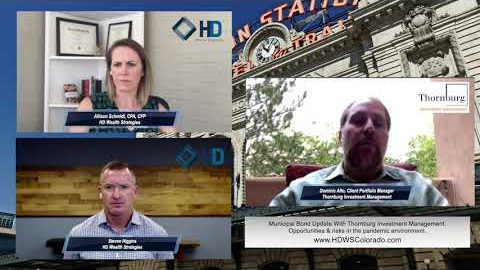A Time to Prepare: Part 2
Removing Emotion from the Investment Process
2021 Q4 Market Commentary
By: Allison Schmidt, Financial Advisor, CFP®, CPA
I don’t know how it’s possible, but we’re already three quarters of the way through 2021…time flies! We’re finally settled into our new office space in Denver and are back to seeing some folks for face-to-face meetings. Steve and I are certainly relieved to return to a somewhat normal office environment and love being able to sit down across the table from so many of you. I think one of the things that I will remember most about all of those virtual meetings in 2020 is going through our investment process chart…again…and again…and again.
I think a lot of you probably remember that chart. If not, here it is, just to jog your memory.

Investment Management Process
We take a lot of pride in our investment management process. It’s a process that allows us to make sure our qualified client portfolios stay well-balanced and allocated in the way they were initially intended and in line with each person’s personal investment policy. Unlike some advisors, we don’t try to time the market. It is very difficult, if not impossible, to accurately time the market over several market cycles. Our goal is not to avoid market corrections or downturns, it’s to navigate them. Our process includes tactical rebalancing thresholds that are triggered when the market is experiencing significant downside volatility or significant upside movement. We also give credence to economic realities such as inflation and rising interest rates, which my partner, Steven Higgins lays out in his article “Calm Markets Provide an Opportunity”. To boil it down…this process allows us to make sure our portfolios don’t end up over-invested in equities at a stock market top OR under-invested in equities at a stock market bottom.
Since our process is driven by the S&P 500, how much we trade is really dependent on market volatility. For example, in 2020 we traded through our qualified portfolios 7 times (3 times selling stocks and 4 times buying stock), and that doesn’t include tax-offset trades in non-qualified accounts or Roth conversions. This year we’ve traded through our qualified accounts twice and both were to reduce stock, to pocket some of the gains through the year. One of those trades was in April and the other in September.
Removing Emotion
The most important piece of our investment process is removing the chance of an emotional decision. When markets start to move quickly, especially to the downside, it can be hard to see the light at the end of the tunnel. A great example is March of 2020. The S&P 500 dropped by almost 34% in about a month…the fastest ever. Our investment process dictated that we make our last stock purchase (of three) on Friday, March 20th, and the market bottomed on Monday, March 23rd. We know now that was a great time to buy, but at the moment, it didn’t necessarily feel that way.
March 20th, 2020 felt dark…financial headlines were “just the beginning”, “could be worse than 2008”, “where’s the bottom?”. On that day our process indicated that we buy stocks for the third time in as many weeks. Buying stocks was not popular on March 20th, 2020, but, our investment process indicated a buy…so we bought. We took the emotion out of how we were personally feeling, how the economic world felt, and turned to the numbers. Now, 18 months later, and it’s one of the best things we could have done for our clients…the S&P is up 95.85%* since that dark moment on March 20th. This is why we have a process: because our client portfolios can’t be determined by how we woke up that morning or what article we decided to read.
Looking Forward
If you’ve worked with us for a while, you know that we talk a lot about market volatility. It may seem that we’re constantly anticipating a market decline…we’re not, we feel confident in this market over the long run. However, short-term volatility is very normal and can be unsettling. Our goal is to remind our clients that there is a plan, there is a strategy. When (not if) markets get volatile, we enter another recession, or we experience another bear market, we have an investment process that is built not to avoid the market declines but to navigate them.
*ycharts.com: ^SPX 3.20.20-10.18.21
Securities offered through LPL Financial, Member FINRA/SIPC. Investment advice offered through Higgins & Schmidt Wealth Strategies, a registered investment advisor and separate entity from LPL Financial. The opinions voiced in this material are for general information only and are not intended to provide specific advice or recommendations for any individual. All performance referenced is historical and is no guarantee of future results. There is no guarantee that a diversified portfolio will enhance overall returns or outperform a non-diversified portfolio. Diversification and asset allocation does not ensure a profit or protect against a loss. Stock investing involves risk including loss of principal. Bonds are subject to market and interest rate risk if sold prior to maturity. Bond values will decline as interest rates rise and bonds are subject to availability and change in price. Rebalancing a portfolio may cause investors to incur tax liabilities and/or transaction costs and does not assure a profit or protect against a loss.











